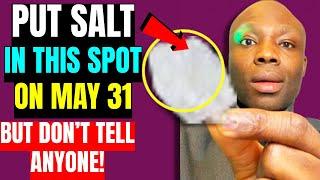
️ Genius or Risky ! 195KG Barrel Drop on Tire ! (Truck Hack)
A Little Wisdom Helps You Become Smarter !
This video demonstrates an improvised method for unloading 195kg lubricant barrels from a truck: rolling them onto a repurposed tire at the truck bed’s edge. While the tire provides elastic cushioning (absorbing ~60% of impact energy), self-centering (due to diameter matching), and slip resistance (μ=0.7 friction), hidden dangers persist:
Critical Structural Limits:
Barrel Seam Fatigue: Each drop stresses welded joints. After ~8 drops, seam integrity drops below GB/T 325 safety standards (laboratory drop-test data).
Tire Degradation: Field measurements show aged tires lose 40% of cushioning capacity within 6 months due to ozone cracking and rubber hardening.
Why This Matters:
Force on worker’s spine during tilting reaches 1,800N (per OSHA ergonomic limits, injury risk starts at 1,000N).
Compromised barrels risk leaks: 1L of spilled oil contaminates 1 million liters of water (EPA data).
Low-Cost Optimization:
Foam-Filled Tires: Inject polyurethane foam (density: 0.4g/cm³) into used tires – improves shock absorption by 70% and extends service life 3x. Cost: less than ¥50/tire.
Slope Board Add-on: Place a 15° angled wooden ramp with used conveyor belt lining – reduces tilt force to 300N. Cost: ¥120.
Verify Tire Health:
Press thumb into tread – if rubber doesn’t rebound within 3 seconds, replace immediately.
Check for sidewall cracks more than 2mm depth – indicates critical aging.
Prioritize Health Over Hacks: Temporary savings ≠ lifelong back injuries.
This video demonstrates an improvised method for unloading 195kg lubricant barrels from a truck: rolling them onto a repurposed tire at the truck bed’s edge. While the tire provides elastic cushioning (absorbing ~60% of impact energy), self-centering (due to diameter matching), and slip resistance (μ=0.7 friction), hidden dangers persist:
Critical Structural Limits:
Barrel Seam Fatigue: Each drop stresses welded joints. After ~8 drops, seam integrity drops below GB/T 325 safety standards (laboratory drop-test data).
Tire Degradation: Field measurements show aged tires lose 40% of cushioning capacity within 6 months due to ozone cracking and rubber hardening.
Why This Matters:
Force on worker’s spine during tilting reaches 1,800N (per OSHA ergonomic limits, injury risk starts at 1,000N).
Compromised barrels risk leaks: 1L of spilled oil contaminates 1 million liters of water (EPA data).
Low-Cost Optimization:
Foam-Filled Tires: Inject polyurethane foam (density: 0.4g/cm³) into used tires – improves shock absorption by 70% and extends service life 3x. Cost: less than ¥50/tire.
Slope Board Add-on: Place a 15° angled wooden ramp with used conveyor belt lining – reduces tilt force to 300N. Cost: ¥120.
Verify Tire Health:
Press thumb into tread – if rubber doesn’t rebound within 3 seconds, replace immediately.
Check for sidewall cracks more than 2mm depth – indicates critical aging.
Prioritize Health Over Hacks: Temporary savings ≠ lifelong back injuries.
Комментарии:
️ Genius or Risky ! 195KG Barrel Drop on Tire ! (Truck Hack)
Wisdom Pouchannel
Лекция «Объединённые Арабские Эмираты: история, культура, традиции» / Николай Полонский
Российская государственная библиотека
MAY 31: Place Salt Here & Unlock God’s Wealth Blessings Before Midnight!
PRECIOUS SPIRITUAL TV
Permanent Results Portal 2.0 - (Morphic Field)
SubMorphic Inc.
Homemade White Bread How-to
Everyday Food
충격적인 강아지 서열 순위
꿀꿀썰
Uebel Bass Clarinet to Low C at Dawkes Music
dawkesmusic


























